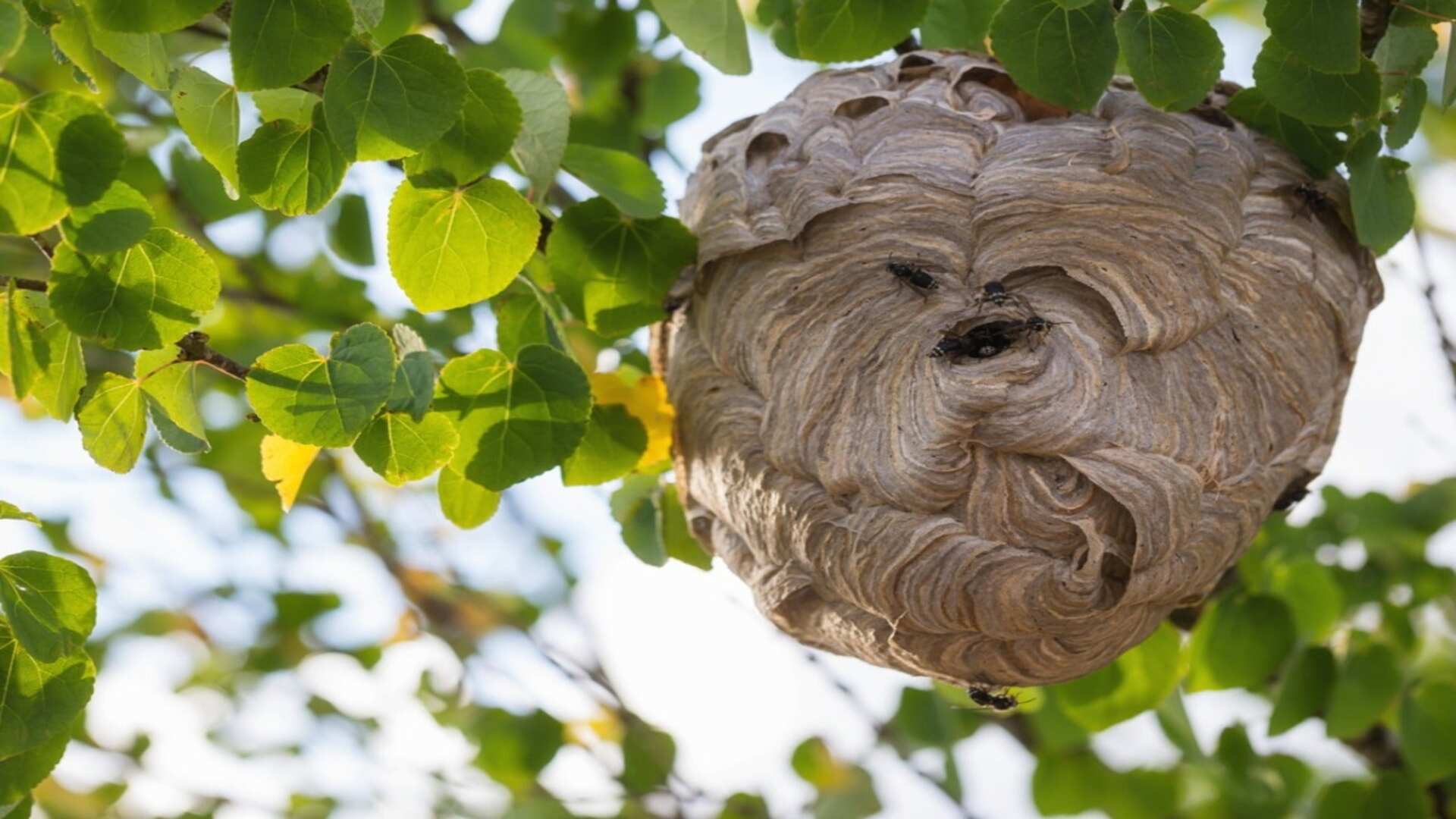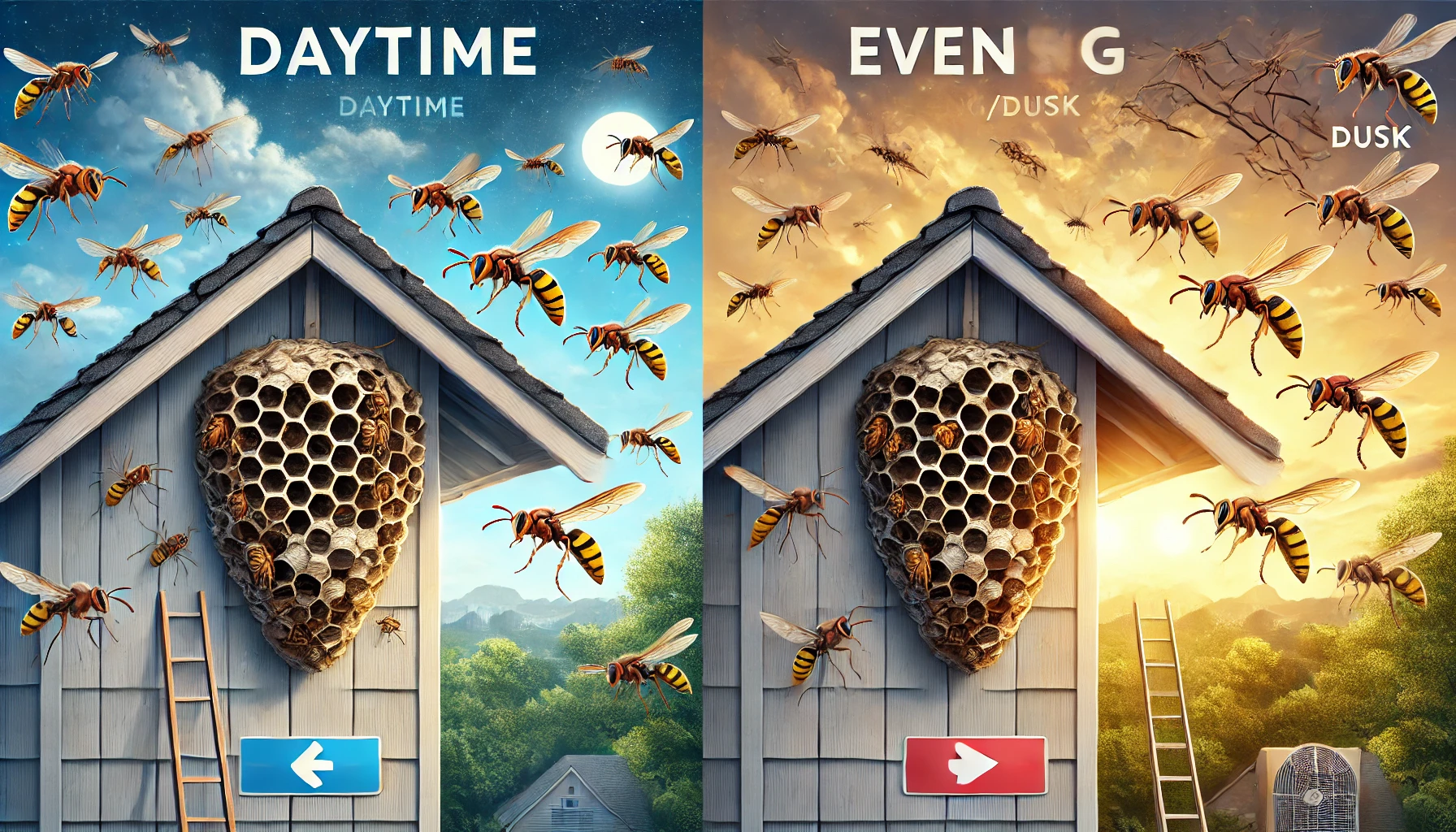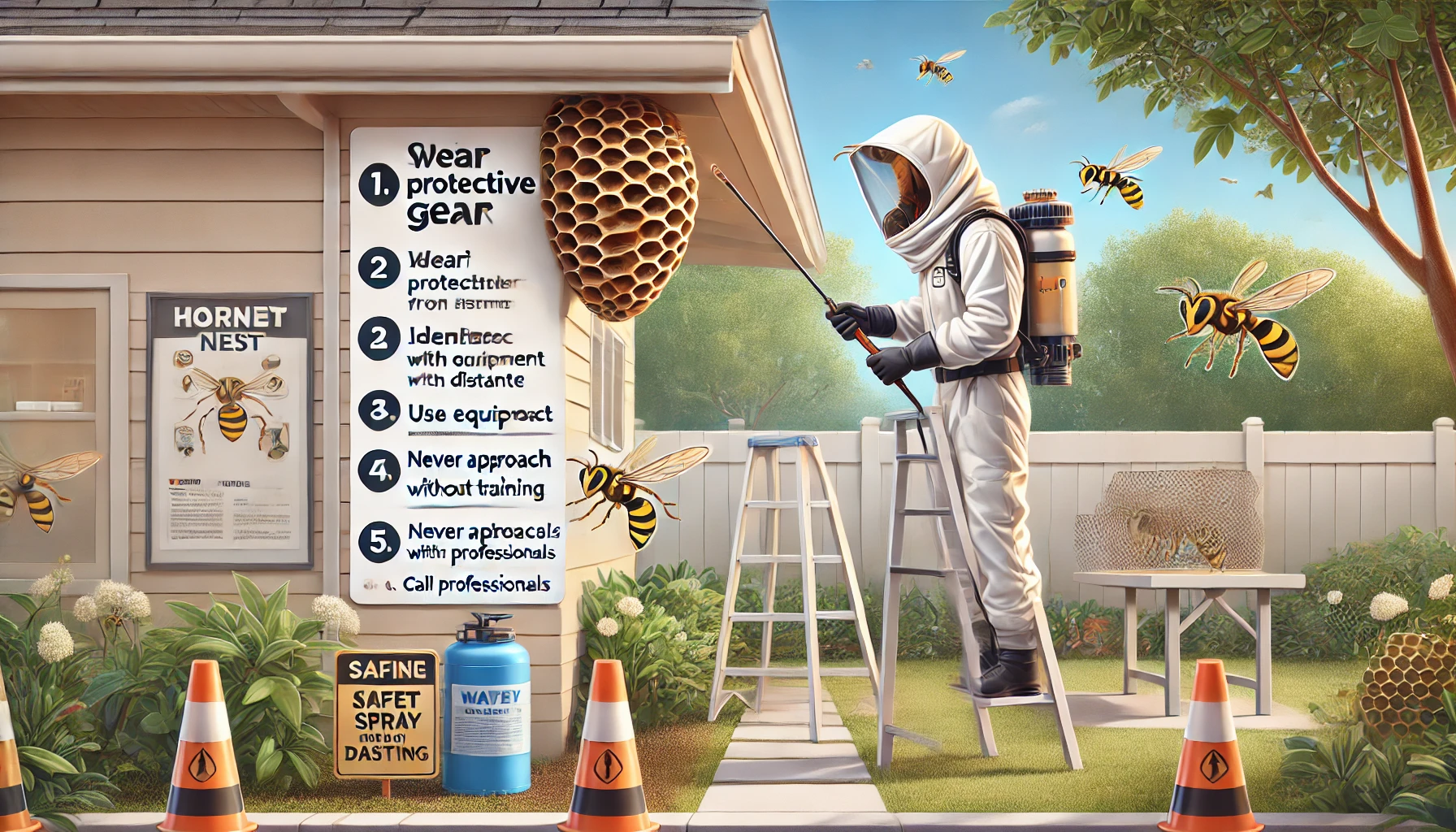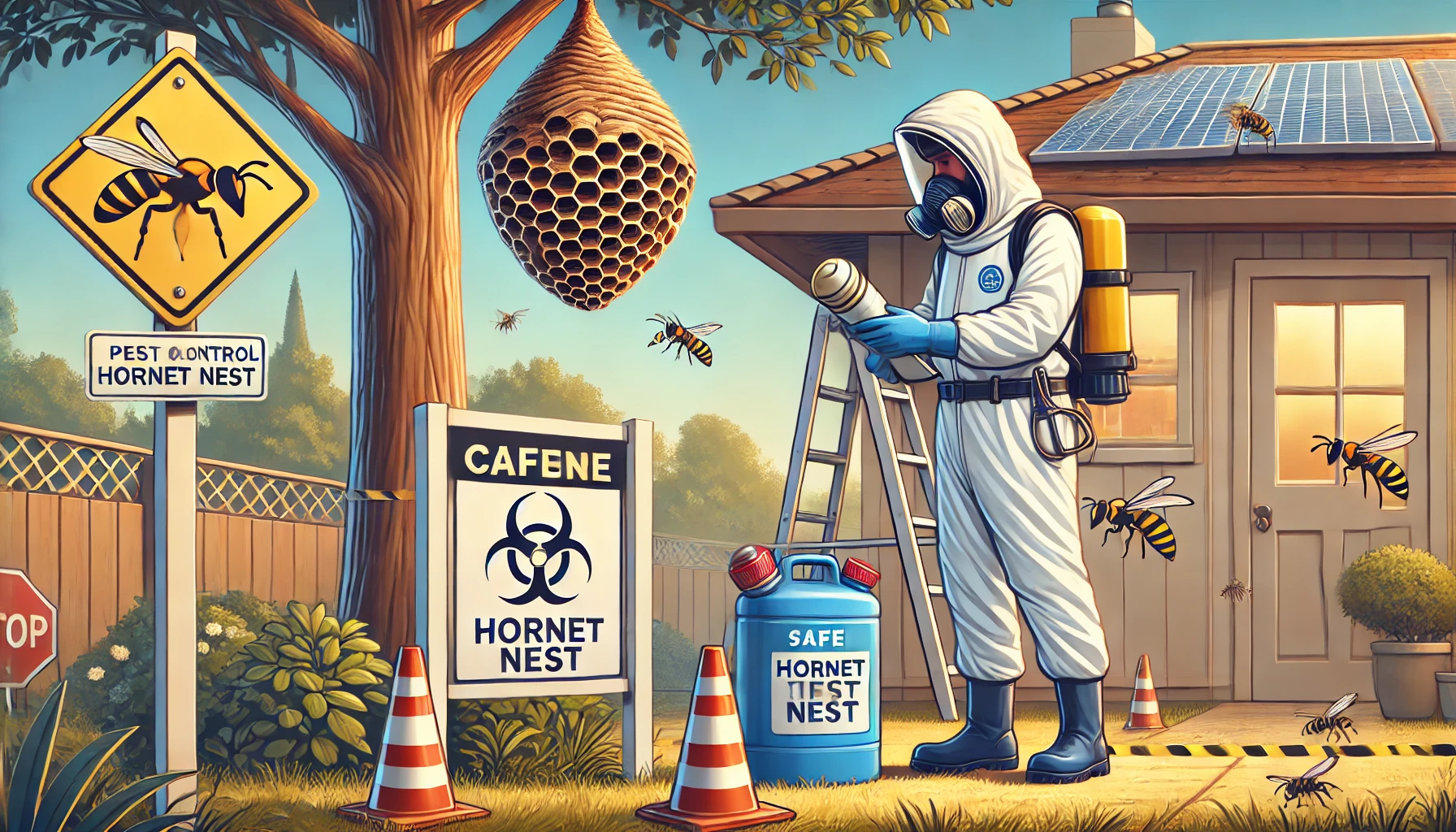Key Takeaways
- Spray hornet nests during late evening or early dawn.
- Cooler temperatures reduce hornet activity, making removal safer.
- Always wear protective clothing and prepare an escape route.
- Wait at least 24 hours after spraying to remove the nest.
- Call professionals if the nest is large, high, or difficult to reach.
 Facing a hornet nest around your home can immediately turn your peaceful space into a problematic environment. Hornets aren’t just a problem—they can pose a natural risk due to their aggressive nature and painful stings.
Facing a hornet nest around your home can immediately turn your peaceful space into a problematic environment. Hornets aren’t just a problem—they can pose a natural risk due to their aggressive nature and painful stings.
With an understanding of accuracy when and how to deal with these pests safely can make all the difference. Here’s everything you need to know about the best time to spray a hornet nest safely and effectively. Why Does Timing Matter? Hornets are highly active and territorial during daylight hours. They leave the nest frequently throughout the day to forage, returning around dusk. Approaching or disturbing a hornet nest during daylight dramatically increases your risk of being swarmed and stung.
Conversely, hornets become sluggish and significantly less aggressive when temperatures drop, typically below 50°F. Cooler nighttime temperatures cause hornets to settle inside their nests, making late evening or early morning the safest times to take action. At these hours, nearly the entire colony is contained within the nest, increasing the effectiveness of your treatment.
The Ideal Times to Spray a Hornet Nest


Not getting a solution?
Get your free pest control estimate today!Steps to Spray and Remove a Hornet Nest Safely
Taking corrective action at the correct time is only part of a successful removal. Follow these practical, step-by-step instructions for safe and effective hornet nest removal: Step 1: Identify and Observe the Nest Confirm you’re dealing with hornets. Hornet nests are typically large, grey, paper-like structures hanging from trees, eaves, or sheds. Observe the nest from a safe distance during daylight hours to locate its entrance and gauge hornet activity. Step 2: Prepare Your Gear Wear protective clothing such as long sleeves, pants, closed-toed shoes, gloves, and eye protection. Consider wearing a hat or hood for added safety. Thick clothing significantly reduces the risk of stings. Step 3: Set an Escape Route Before approaching the nest, clear a path for a quick retreat. Remove any obstacles that could slow you down if hornets become aggressive. Ensure family members and pets remain indoors during the treatment. Step 4: Choose the Right Hornet Spray Use a dedicated wasp and hornet spray with a range of at least 15 feet. These sprays are designed to quickly immobilize hornets, minimizing risk. Never attempt removal using water, fire, or knocking the nest down directly. Step 5: Spray the Nest Thoroughly Position yourself downwind and approximately 10-15 feet from the nest. Aim the spray directly at the nest’s entrance and thoroughly saturate the nest. Spray continuously for at least 10 seconds or until the entire nest is soaked. After spraying, retreat immediately to your predetermined safe location. Step 6: Wait Patiently Allow at least 24 hours for the insecticide to fully eliminate hornets within the nest. Resist the temptation to inspect too soon. Observe from a safe distance instead. Step 7: Safely Remove the Nest After confirming hornet activity has ceased (typically after 24-48 hours), approach cautiously, wearing protective clothing. Gently detach the nest using a long-handled tool, place it in a sealed garbage bag, and dispose of it safely outdoors. Step 8: Clean and Prevent Future Nests Clean the area thoroughly with soapy water to remove residual chemicals and hornet pheromones. This discourages hornets from rebuilding nearby. Additionally, seal entry points and consider natural deterrents such as peppermint oil or fake nests. Common Mistakes to Avoid
Avoid these common pitfalls when handling hornet nests:
Common Mistakes to Avoid
Avoid these common pitfalls when handling hornet nests:
- Never spray during midday when hornets are active.
- Don’t use open flames or water hoses on active nests.
- Avoid bright lights directly pointed at the nest during night time spraying.
- Never attempt removal without appropriate protective clothing.
- Do not stand on a ladder alone when removing high nests—call a professional.

When Should You Call a Professional?
While DIY methods can be effective for small to medium nests in accessible areas, certain situations require professional intervention:- Very large nests (larger than a basketball).
- Nests in challenging or high locations such as tall trees, power lines, or inside walls.
- Persistent hornet activity despite multiple treatments.
- Known allergy to hornet or wasp stings.
Visit our Species, Control, and DIY Guide sections for additional resources on hornet and ways to tackle a hornet infestation.





